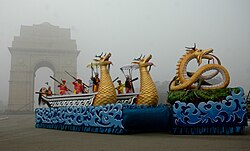| Pureiromba (Old Manipuri: Puleilompa) | |
|---|---|
Giver of rain and agricultural prosperity | |
| Member of Umang Lais | |
| Other names | Pureilomba |
| Major cult center | Andro, Imphal East, Manipur |
| Gender | Male |
| Region | Manipur |
| Ethnic group | Meitei |
| Festivals | Lai Haraoba |
| Offspring | Chinsongba (son) |
| Part of a series on |
| Meitei mythology |
|---|
 |
| Part of a series on |
| Sanamahism |
|---|
 |
Pureiromba (also, Pureilomba or Puleilompa) is a God in Meitei mythology and religion. He is the giver of rain and agricultural prosperity. [1] He is one of the major Umang Lai deities. [2] He is the Ancestor God of the Angom clan of the Meitei ethnicity. [3] [4] [5] [6]
